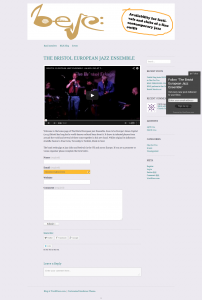Mutual Methods: Community Development
Community development is a recurring theme on this blog because it is a fundamental approach to supporting transformative change. The big difference between neighbourhood work and other third sector work, is neighbourhoods often lack access to resources. They have little access to political power that can bring about change. Very often resources are not available and so the only recourse they have is to organise, by building solidarity or community between local residents. This is not always easy because neighbourhoods, divided by race, faith or politics, lack common interest.
My aim here, as part of a review of mutual methods, is to point to a few resources. Community development in the UK has been systematically under-valued, not least by many of its practitioners. Its role and purpose is sometimes highly contested by practitioners and the upshot has been its devaluation to the extent that most funding for development work has been withdrawn.
Community Development Standards
One result of conflicting approaches is community development workers have never agreed on standards for community development and have never had a representative body. Whilst the Association of Community Workers and the Community Development Exchange, are examples of attempts to represent the interests of community development workers, there is nothing like the Chartered Institute of Personnel and Development, for example. This has had a devastating effect because without a career structure, experienced workers have had to move into other roles if they needed to increase their income. This means there has never been effective mentoring of new workers or recognition of their expertise as development workers.
Community Development and Activism
One major issue is confusion between development and activism. Some people think this distinction favours development (as an activity carried out by middle class professionals) over activism (carried out by local residents). This is nonsense. Both roles are important but they are different and need different approaches. I do both and find remembering which role I’m playing is really important.
Activism is issue or task driven. The activist’s focus is upon social change or transformation. They take responsibility for seeing a change through. The development workers’ role is to equip activists for their tasks. This is partly knowhow but also understanding how things work and so inevitably has an ideological dimension.
Should the development worker be a local person? Community development can work where the worker is local although local commitment can make the work more difficult where the development worker identifies with the cause. I’ve found it helps to have a little distance from the activists. But each worker needs to understand the dynamic of their particular role.
The model of a development worker in every neighbourhood is not necessarily the best approach. A small team could easily cover a city and equip activists to take on more of the role traditionally taken up by a local development worker. In my experience, a good administrator is of more value than a local development worker. Indeed, many development workers find they are doing administration because they have the time to do it! City wide development work reflects the model of citizens’ organising (see next week).
A Community Development Resource
There are loads of books about community development. One of the oldest, still worth reading, is “Skills in Neighbourhood Work “ by Paul Henderson and David N Thomas. The first edition came out in 1980 and the fourth in 2013. The new edition reflects major changes since the first and includes new case studies.
